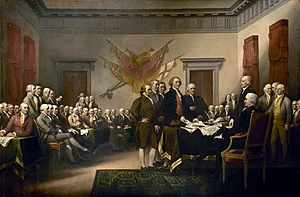Another excursion in the Law of generations as Natural Law
Sometimes you can study these things while being entertained. My wife and I ran across across a British murder mystery series called “Midsomer Murders” about a fictional English county west of London. It began in 1999, and we’ve watched Seasons 1 thru 14 so far, each with 5-7 episodes, each 90 minutes long.
Very entertaining it is also very instructive about contemporary English “country” society….only think more of county in upstate New York than one in Georgia.
It’s done in modern times. The backdrop set pieces are several villages, all of which are picturesque and quaint, and each village having at least one large manor house with many of the original families still living in them, their lines running back generations. This was how English estates were originally laid out after the Norman Conquest. So in every village there is a noble house, some stretching back centuries and generations, a few “bought” by nouveau riche capitalists after a family line had died out. The upper classes all carry that “public school” Oxford speech pattern as if they were talking down their nose (hence the term). Every village has a middle class, from small tradesmen, book and antique dealers, and the uniquitous pub owner, to a few professionals; doctors, vets, teachers, farmers plus the few ambitious corporate types (just mentioned) who commute by train to London, and a bevy of working class folk, from handymen, barmaids, to mailmen, and farm workers. You can tell everyone’s class by the cars they drive.
A common thread in almost every episode is the interaction of these classes, especially as to rank and place, as everyone know his or her place and in part of every episode someone is reminded of his or her rank. It’s so common that I can only assume assume its written into the script so that English audiences will take note of the normalcy of the social situations….something you don’t see in “Law and Order” or “Blue Bloods”. Every episode has at least one scene in the local pub, and usually only one can be found, since most of these villages numbering only in the hundreds, but all with colorful names. And by law they have always closed by 11.
It took us only 3 episodes to realize we should use closed captions, for much of high English English is difficult to make out phonetically, when it’s spoken through ‘is Lordship’s nose, or ‘er Ladyship’s chin”. And English slang, much of it profane, is impossible to decipher, although the context usually tells us whether it is sexual, homosexual, or scatological. My wife, with a better ear, always puts her hand to her mouth and whispers, “Oh my”.
You already know my penchant for noting generational differences and the interactions between the generations “of class” and “without class” here are very instructive. Remember, they serve as backdrop for English audiences to what is normal, whilst in every episode there are three, yes, three murders, almost always related, and usually by the same person.
In the story lines you find that these villages accept carnal sex as ordinary, in or outside of marriage, as sneaky liaisons figure prominently in the story line, but rarely a factor in the crimes. Just local color. This includes homosexual faithlessness (male and female) just as common as heterosexual. The English moral baseline seems to begin with keeping the family name intact and since divorce is considered declass, hubby and wifey are free to find their entertainments elsewhere, subject only to idle gossip at the pub. Again, these are presented as local color, and not the basis for the weekly 3-death crime spree…which, since the police carry no guns, and all the shotguns in England are closely regulated, the chosen modes of killing are by kitchen knife, strangulation (always from behind, and always by a gloved set of hands in a dark hoodie), pushes over cliffs, and poison.
These killers range in class from Lord or Lady of the Manor (3 times), to every profession, including the local parish parson, twice a killer, thrice a victim, two priory nuns (victims, two doctors, even a bird watcher (fergodsakes!).
There are other assorted crimes that are usually associated with the crimes, e.g., blackmail, fraud, sometimes as motives, but more often as not, unrelated to the principal motive for fraud. These are all thrown to throw the viewer off, the plotlines which much like an old whudunnit from Charlie Chan (Earl Der Biggers) or Thin Man (Dashiel Hammett) days, where the audience is invited to try to guess the killer for the 75 minutes, before it’s all laid out by the Chief Inspector for the audience in the final scene. This is almost always via a step-by-step confession by the killer, once he’s been found out.
These confessions are stunning, for in over 180 murders, not a single killer has yet said “Sorry”. Or “I was wrong.” Or “It was wrong.” Every killing, even if only a pedestrian who accidentally witnessed the killer in the neighborhood, was just sluffed off by the killer as collateral damage. Not a single word of repentance.
And our killers ran the age range from 85 to 9, yes 9, who never faced a court because her great aunt, herself old and dying (played by Honor Blackman, James Bond’s Pussy Galore in “Goldfinger”) knowing the little girl was cruel and blind to the notion that she had done anything wrong, chose to execute her by driving both herself and the girl over a cliff into a quarry pit…probably to save the family name.
We are beginning to see this moral detachment in America at both ends of the economic spectrum, and need to pause to consider just what happens to a society that has reached a third (de-)generation of a moral base to its world view. You might want to check out “Misomer Murders” on BritBox or Netflix.





